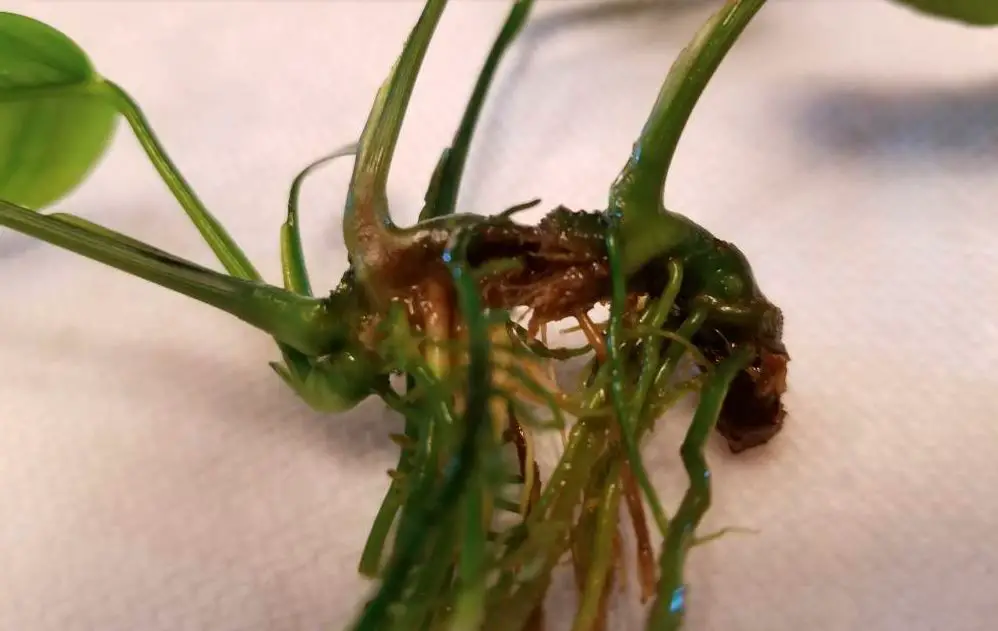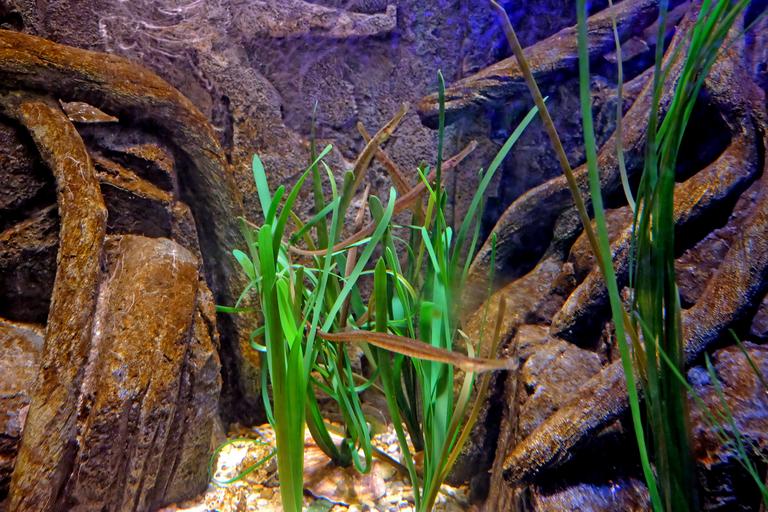Introduction
If you have an anubias in your aquarium and you have noticed it starting to rot, you might be wondering what the best course of action is. Unfortunately, rot is contagious, so you need to make sure you know how to deal with it!
Anubias rot results in the loss of the plant’s leaves, and the base of the stalk turning soggy or gooey. The rhizome will become squishy and mushy, and may have a strong, unpleasant scent. You will probably see the roots becoming discolored and starting to rot away into the tank water.
Anubias rot can be difficult to deal with, so in this article, we’re going to look at some potential cures to make your plant healthy again. We’ll also look at floating anubias plants, and what causes an anubias to turn yellow.
How Do You Cure Anubias Rot?
Anubias rot is unfortunately not easy to cure, and many people find that they simply have to throw the plant away and start again – but it is still worth trying to save it before you discard it. After all, you have nothing to lose except some time.
There are a variety of steps you can take to try to overcome anubias rot. Many people remove the plant from the water and try treating it with chemicals such as hydrogen peroxide, potassium permanganate, or bleach.
To do this, you should add a small amount of the chemical to some water (not in your tank) and dip the anubias into the water. Next, isolate it in a separate container so that the rot cannot spread to other plants in your main tank, and keep treating it regularly. If you are lucky, the plant will recover.
The other option involves cutting away the rotting tissue, and many people find that this is a more successful method of preventing rot. If you want to use it, you should first sterilize some sharp scissors using bleach or rubbing alcohol.
Next, use the scissors to cut away any parts of the plant that have turned mushy or black. You want to leave only healthy tissue behind, because any rotting tissue that is left on the plant will quickly reinfect the rest.
Keep sterilizing your scissors as you work, and dip the final cut end in some bleach or another chemical to kill off any mold spores remaining on the plant. Put the plant back into the water (in a quarantine tank) and see if it recovers.
Can Anubias Be Left Floating?
An anubias will float quite happily for days, weeks, or even months, but you will probably find that your plant eventually attaches itself to something – whatever this might be. They may latch onto the filter, onto rocks, or onto the sides of the tank, but they will almost always find something to hang onto.
That said, it won’t hurt your anubias to leave it floating for a while. The plant will likely drift around in the tank currents, and sometimes this reduces the risk of it rotting because water is able to flow freely over it, providing a constant supply of oxygen and making the conditions inhospitable to mold.
However, most anubias plants will eventually root themselves, and even if they don’t, they can rot. You should try to choose a suitable spot for your anubias and not leave it floating indefinitely, as this isn’t a solution to the plant rotting. Your plant should be happy to float for a while, but eventually, you should attach its roots.
Many people prefer to do this by supergluing them to a suitable surface, because this still allows plenty of water to flow across them, and should minimize the risk of rot.
Will Anubias Leaves Grow Back?
An anubias should regrow any leaves that it has lost, as long as it is in good conditions and it is healthy. You need to make sure that the plant has the right level of light and that the tank is at the right temperature. Check that all the parameters are correct, and your anubias should produce new foliage pretty quickly.
That said, if you have not addressed the problem with rot, the plant is very likely to get sick again fast. Rot will spread through the water, infecting the new foliage. If you haven’t got rid of the rot, it won’t matter how much your plant grows, because it will constantly be losing leaves.
If the tank conditions are not right for your anubias, it will struggle to produce new foliage when it has lost its leaves. You need to make sure you provide the most suitable environment you can in order to keep your plants happy.
Why Is My Anubias Yellow?
If your anubias is producing yellow leaves, this indicates that there is something wrong with the plant’s environment. Yellowing can be a sign of rot, but it may also indicate that your anubias isn’t getting enough light.
Alternatively, yellowing may occur if the plant is lacking in nutrients, so you should check that there is enough food in the tank for the anubias. You should also make sure that the water is clean and fresh, as dirty water can lead to a whole range of issues that might cause your plant to produce yellow leaves.
In some cases, a newly planted anubias will turn yellow simply because it is struggling to adjust to the new conditions. You should see it recovering fairly soon if you have planted it well and the conditions are right for it, but keep an eye on it and make sure that any new shoots it produces are green.
Don’t ignore yellow leaves on an anubais, as these are a clear indication that something is amiss with the plant, and they may get worse if you don’t take action!
Conclusion
Anubias rot is unfortunately a common issue with these plants, and it can be difficult to fix. Isolate the affected plant to prevent the others in the tank from rotting, and remove as much of the damaged foliage as possible, and then treat the plant with a mold-killing chemical. In some cases, your anubias will recover.



